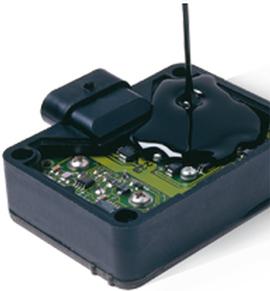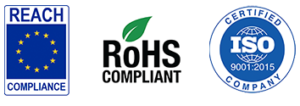How do you choose the proper potting compound for your application? Read below for some helpful information.
Epoxy, urethane, and silicone are common materials used for potting and encapsulation in electronics, automotive, aerospace, and industrial applications. Each material has its own advantages and is chosen based on the specific requirements of the application.
1. Epoxy Potting
Epoxy potting and encapsulating compounds are very popular when choosing the proper material. Epoxies tend to easy to work with and come in a variety of options in regard to working time, color, viscosity, conductivity, and other physical properties. This makes epoxy a very popular and versatile option.
- Pros:
- High mechanical strength
- Excellent adhesion to most substrates
- Good chemical and moisture resistance
- High thermal stability
- Low sensitivity to moisture
- Cons:
- Rigid and brittle (can crack under mechanical stress)
- Longer curing time
- Can be difficult to rework or remove
Best for: Applications requiring strong adhesion, high heat resistance, and chemical protection (e.g., PCB potting, industrial electronics, transformers).
2. Urethane (Polyurethane) Potting
Polyurethane is a common chemistry used in electronic potting applications. Very often cost is a large factor when choosing a product and urethanes generally (not always) are more cost effective. Urethanes also offer the possibility of faster setting or gel times allowing for faster throughput.
- Pros:
- Flexible and impact-resistant
- Good moisture and chemical resistance
- Can withstand thermal cycling better than epoxy
- Good electrical insulation properties
- Cons:
- Not as thermally stable as epoxy
- May degrade with prolonged UV exposure (unless UV-stabilized)
- Shorter shelf life compared to epoxy
- Individual components are sensitive to moisture
Best for: Applications needing flexibility, impact resistance, and moderate heat resistance (e.g., automotive electronics, marine applications, LED encapsulation).
3. Silicone Potting
Silicone potting compounds are excellent when higher temperature resistance is required and many of them can withstand temperatures of up to 250°C. Many silicones offer easy 1:1 mix ratios allowing for use in meter mix systems. While epoxies and urethanes can be formulated to be self-extinguishing (flame retardant) and pass UL94 standards, silicones are naturally self-extinguishing.
- Pros:
- Excellent flexibility and elasticity
- High-temperature resistance (-60°C to 250°C)
- UV and weather-resistant (ideal for outdoor applications)
- Excellent dielectric properties
- Cons:
- Lower mechanical strength compared to epoxy and urethane
- More expensive
- Poor adhesion to some substrates (may require primers)
Best for: High-temperature applications, outdoor and weather-exposed electronics, applications requiring flexibility (e.g., LED lighting, aerospace electronics, medical devices).
Choosing the Right Potting Material
| Property | Epoxy | Urethane | Silicone |
|---|---|---|---|
| Hardness | Rigid | Flexible to Semi-rigid | Soft/Flexible |
| Adhesion | Excellent | Good | Moderate (may need primer) |
| Thermal Resistance | High | Moderate | Very High |
| Chemical Resistance | Excellent | Good | Moderate |
| UV Resistance | Moderate | Poor (unless UV-stabilized) | Excellent |
| Reworkability | Difficult | Moderate | Easy |
| Cost | Moderate | Lower-Moderate | Higher |
Further points to consider when choosing the proper potting compound.
Mass and Volume – Large volume potting applications (motor and stator potting, large coils, and large bushings and transformers) must be particularly careful when choosing the correct product as the large volume and mass result in large exothermic reactions and release of heat. Choosing the proper material along with a well designed process can limit the exotherm resulting in a good finished product and safe work environment.
Operational Location – Is the potting application being done in a controlled environment such as a factory or is it performed outside or in the field? This will affect the choice of material as availability and ease of use becomes a major factor. When applying outdoors or in the field of use, a material with an easy mix ratio (1:1 or 2:1) availble in
Would you like recommendations for specific requirements, applications, or processing techniques? Contact us by email at info@epoxyset.com or call at +1 (401)-726-4500. Our application engineers and eager to help you find the solution!



